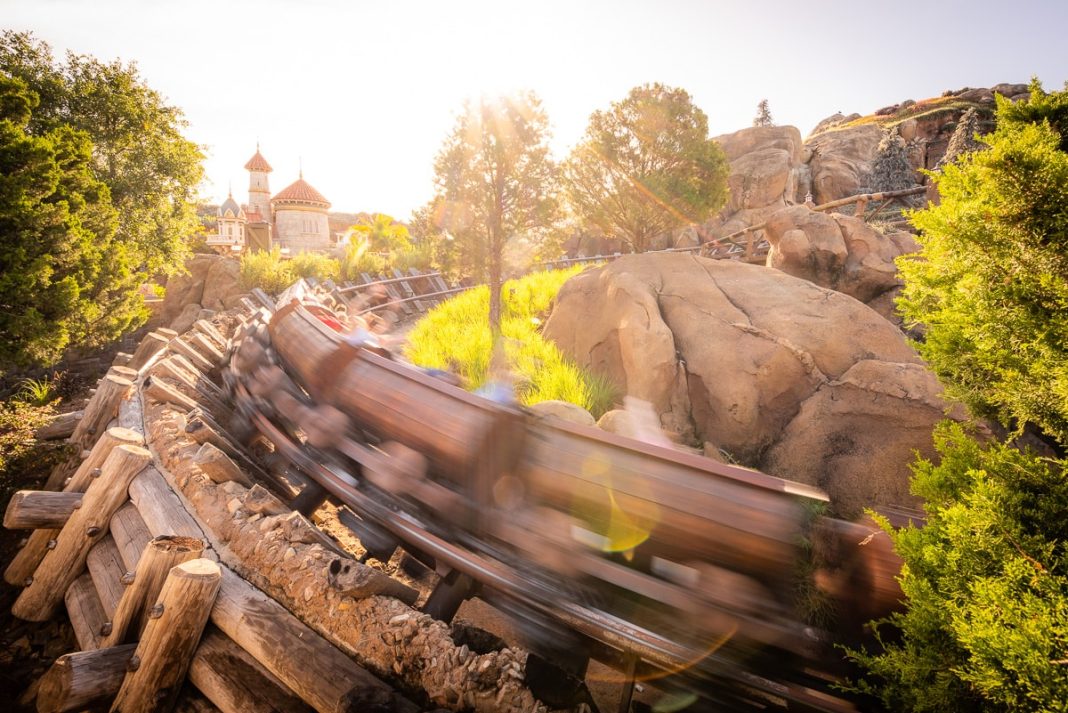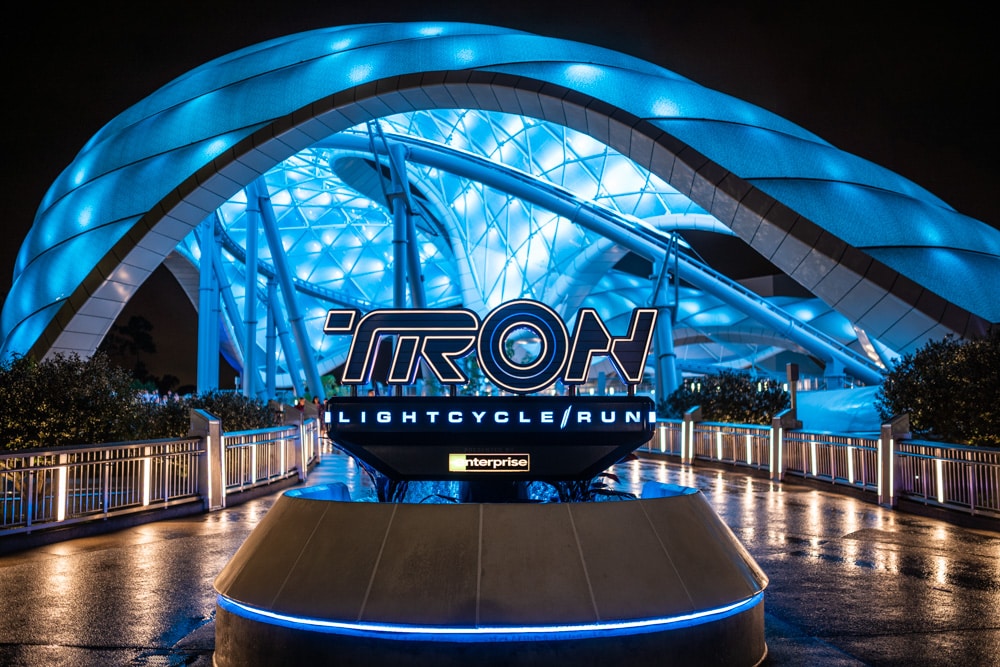
We recently took a look at What’s Up with Lightning Lane Multi Pass Availability at Walt Disney World? Or rather, why there’s a lack of ride reservation options, with attractions filling up faster than before. Now, we’re going to do the same thing with Lightning Lane Single Pass, which is selling out faster than before.
As quick background since we don’t focus on it nearly as much, Lightning Lane Single Pass (LLSP) is the replacement for Individual Lightning Lanes (ILL). This is the a la carte line-skipping for TRON Lightcycle Run and Seven Dwarfs Mine Train at Magic Kingdom, Guardians of the Galaxy: Cosmic Rewind at EPCOT, Star Wars: Rise of the Resistance at Hollywood Studios, and Avatar Flight of Passage at Animal Kingdom.
The changes to Lightning Lane Single Pass are more or less the same as those to Lightning Lane Multi-Pass (LLMP). Guests can now book in advance, with 3-day or 7-day (plus) windows depending upon the status of guests. That’s the biggest change for both systems, and the impact of that alone is more than anything else. But my personal perspective is that LLMP changed more than LLSP due to differences in the attraction roster, removal of stacking rules, etc. So rightly or wrongly, I was expecting much less of an impact to LLSP than LLMP.
That’s not what we’ve seen so far. On most days since the new services launched, many/most of the Lightning Lane Single Pass attractions have been selling out in advance. In searching availability 3 to 7 days out, I’ve generally had better success in being able to book all of the aforementioned LLSP attractions, but the full range of return times weren’t available.
Honestly, this caught me by surprise and wasn’t even on my radar until receiving reactions to the ‘What’s Up with LLMP Availability?” article. I have never paid as much attention to the a la carte line-skipping option because, frankly, it’s not something I ever buy. There was no reason to do field testing with Individual Lightning Lanes–they were either available or not. Not something you could really hack or maximize.
My sentiment is similar with LLSP, and I’m also not a huge fan of upcharges. I’d rather work around line-skipping services than buy them, and that’s fairly easy with Lightning Lane Single Pass thanks to Early Entry, rope drop, and late nights. Similarly, we will seldom purchase Lightning Lane Multi Pass “for fun.” (It’s also worth acknowledging that we’re bloggers, not the average guests, so the advice here is seldom what we would do, but what you should do.) But I digress.
Now that I’ve spent several days testing out Lightning Lane Single Pass availability, I see that it’s not-so-hot. In fact, let’s just start our analysis with availability graphs from all of the LLSP attractions courtesy of thrill-data.com:










What these heat maps show is that most of the a la carte Lightning Lanes went from abundant same-day availability under ILL to very little under LLSP. There’s a marked shift on July 24. Before that, you could routinely purchase a Lightning Lane for Seven Dwarfs Mine Train or Seven Dwarfs Mine Train, for example, right up until park closing with a near-immediate return time.
That all changed on July 24. As we’ve previously discussed, almost every Lightning Lane Multi-Pass and Single Pass filled up faster on launch day than on the last day of Genie+ despite comparable crowds. That second part is particularly relevant because, when it comes to launch day itself, nothing changed about Single Pass aside from the name.
What I mean by this is that, if you look at July 24 in a vacuum, it was exactly the same for Lightning Lane Single Pass as Individual Lightning Lane was the previous day. There was no advance booking on July 23, so it should stand to reason that LLSP would sell on a similar trajectory to ILL the day before. All subsequent days are a completely different story due to the impact of advance booking, but not that day. July 24 should’ve been roughly the same as July 23.
![]()
![]()
And yet, that’s not what happened. Lightning Lane Single Pass availability was incredibly limited–consistent with what we’d see in the week that followed. (Before you attribute that to vloggers, bloggers, and thirst-for-first Floridians…there aren’t that many of us. There’s literally no way these demographics had a meaningful impact on Avatar Flight of Passage availability, for example; maybe like 10 people were testing in DAK on day one.)
The more obvious and likely explanation is that Walt Disney World is throttling Lightning Lane availability because it’s brand new and they themselves aren’t sure of what to expect. That they’ll slowly open the valve, so to speak, in the weeks to come. We should start seeing more upfront availability and ride reservation refills as the months go on. This is something we’ve already discussed in other posts about LLMP, so I’m not going to rehash that.
It surprises me a little bit that Walt Disney World would throttle Lightning Lane Single Pass availability, as it doesn’t have the other “moving parts” that they need to account for with LLMP. So I assumed it wouldn’t happen. Nevertheless, there’s no clearer sign than July 24 availability for LLSP that it was happening. So it’s safe to say that it was, despite there being less of a “need” for it.
Going forward, there are other explanations as to why Lightning Lane Single Pass is selling out faster than Individual Lightning Lanes…


The obvious explanation is that instead of everyone booking same-day, and thus it taking longer for Lightning Lanes to sell out, these Single Passes can now be booked as many as 21 days in advance. As such, this could mostly be viewed as a straightforward story of pulling forward demand. Instead of booking up over the course of hours on the day-of, they’re booking up over the course of days ahead of time.
This is undoubtedly the biggest factor at play, and we’d expect this to be true going forward as a result. Lightning Lane Single Pass is selling out ahead of time because you can book it ahead of time. No big mystery and probably no further explanation needed–this angle is fairly self-explanatory and simple stuff.
However, this cannot completely explain-away the discrepancy between Individual Lightning Lanes and Lightning Lane Single Pass. Especially given that there were plenty of dates during slower times of the year–like right now–when ILLs were not selling out at all. No amount of pulling forward demand would matter if there wasn’t enough demand for a sell out.


One contributing factor is, as silly as this might sound, the streamlined purchase process. One underappreciated enhancement to the new Lightning Lane system is the user interface and order flow. Over the years, we’ve criticized Disney IT for the amount of unnecessary friction and confusion introduced, and how this was the exact opposite of what companies like Amazon do, spending billions to improve the user experience to boost sales.
Well, Walt Disney World finally pulled a page from that playbook, and the ability to purchase Lightning Lane Multi Pass and Single Pass in one transaction has likely boosted sales. It’s as simple as checking a box, selecting times, and completing the checkout, rather than separate transactions for Multiple Pass and Single Pass in each park. I’d hazard a guess this has increased sales, even if only slightly. It all adds up.
Switching to a pre-arrival system likely resulted in a major boost to Lightning Lane Single Pass bookings for a few reasons…
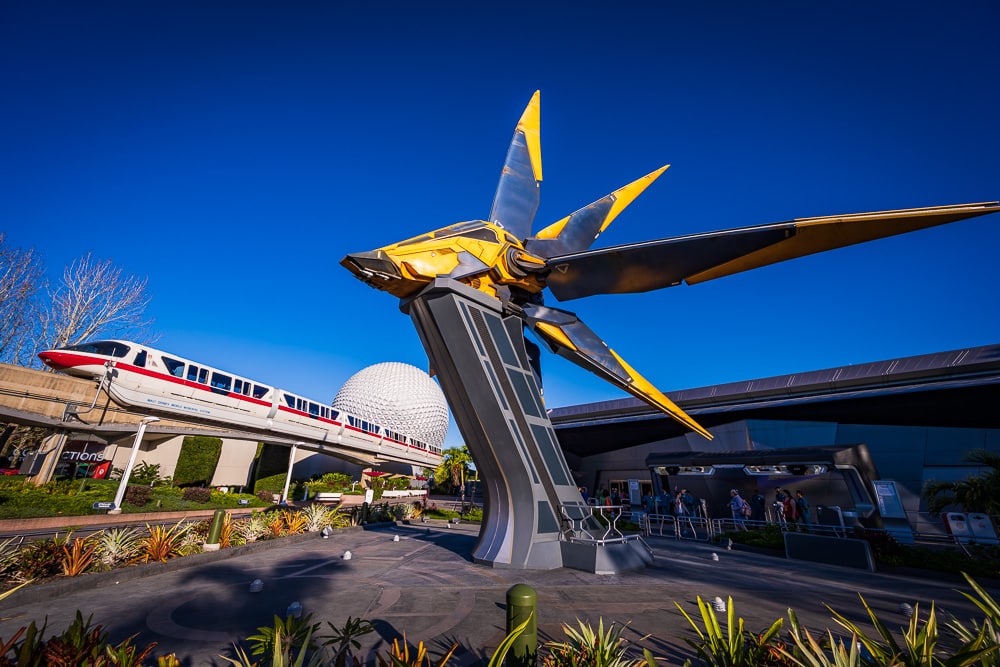

First, FOMO and FUD–two of my favorite “facronyms.” We’ve ranted at length in the commentaries to posts about fireworks dessert parties and other upcharges about the WDW FOMO Machine. In a nutshell, it’s easy to fall into the FOMO trap, and you could drop an extra $5,000 or more on extras and upcharges to “guarantee” a great trip to Walt Disney World. You don’t want to miss out on something that’s “essential” to a great trip, so you err on the side of caution and buy a bunch of pointless upcharges that don’t actually guarantee that at all.
When shifting from same-day to pre-arrival ride reservations, there’s more of this FOMO. You haven’t started experiencing the parks, so you don’t know what wait times will be like, and might be more inclined to worry about ride reservations selling out. Horror stories about colossal crowds might be front of mind.
And then there are the attractions with virtual queues, which is where FUD comes into play. With the same-day booking, you can try your hand at the morning virtual queue and still buy a Lightning Lane later if you fail. With advance booking, you haven’t tried your hand at the virtual queue sweepstakes, so you don’t know the outcome–you’re basically buying blind.
If you wait to try for the free virtual queue, you might not be able to purchase a Lightning Lane Single Pass, which means potentially not being able to ride at all. If you’ve booked a Walt Disney World trip specifically to experience newer rides, this is probably not a risk you’re willing to take! (This minor-but-meaningful change to consumer psychology is yet another reason why virtual queues should be retired for Cosmic Rewind and TRON Lightcycle Run. They were guest unfriendly before, but now they’re really bad.)


Second, the unknown of crowds. This is somewhat of an outgrowth of the first point, but it’s especially true right now. As we’ve discussed at length, Walt Disney World is not busy right now. It’s been a slow summer at Orlando’s theme parks, as covered Summer (Still) Is NOT High Crowds Season at Walt Disney World. Since Lightning Lane Multi Pass and Single Pass launched, crowd levels have been 1/10 to 3/10 with WDW-wide average wait times of 26-34 minutes.
If you were buying Lightning Lanes same-day, you’d already be at the parks and able to feel this firsthand. Maybe you’d buy Lightning Lanes for one day, decide they weren’t necessary, and skip the rest. However, if you’re buying Lightning Lanes and making ride reservations ahead of time, you haven’t yet experienced crowds (or lack thereof) and might be inclined to overestimate them, err on the side of caution, etc.
In fairness, this cuts both ways. Walt Disney World is not as busy right now as many vacation planners might expect; conversely, there are a lot of dates in October through December where crowd levels will probably exceed expectations for the average guest. The key difference is that anyone visiting then who opted against purchasing Lightning Lanes pre-arrival can simply buy upon arrival. You cannot undo an “unnecessary” purchase. There are no refunds.
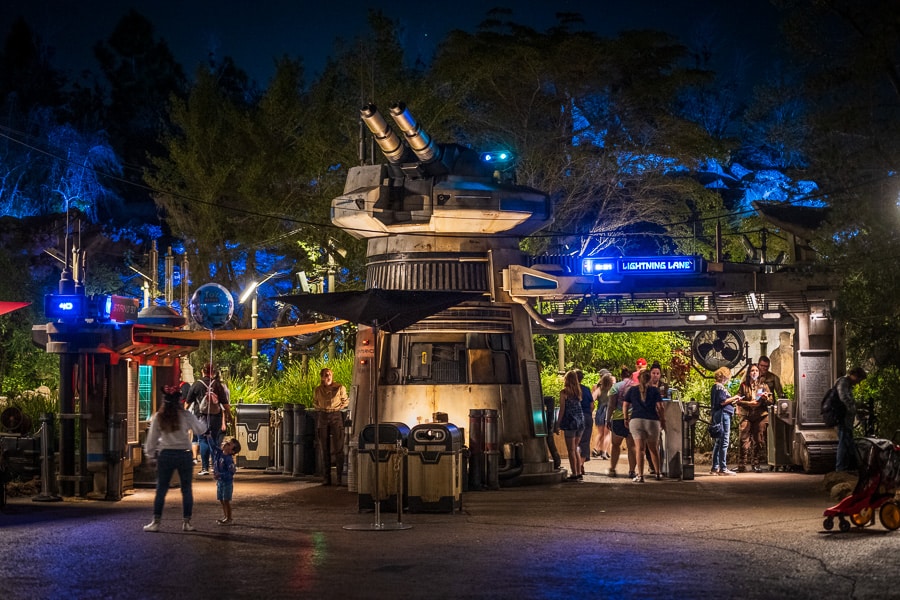

Finally, another big and underrated variable is that pre-arrival Lightning Lanes shift spending to before the trip. If you’re buying before you arrive, you don’t know what your ongoing daily costs have been or will be, just what the vacation package itself cost (which is obviously the biggest component of the trip, but it’s not everything).
One of the biggest complaints we’ve heard from Walt Disney World recently is about all of the nickel and diming and unanticipated costs on vacation, which surprised them and added up to a lot more than they expected. This often came up in the context of Genie, with guests being annoyed that the paid FastPass service busted their budget and resulted in much higher spending than anticipated.
This undoubtedly happened a lot. What also undoubtedly happened was guests going over budget while on vacation and simply not buying Lightning Lanes for later days during their trip because they could no longer afford it. I would hazard a guess that Walt Disney World saw this happening–even among guests with reasonably high satisfaction scores–and it was one motivating factor for the switch to pre-arrival Lightning Lanes. It’s another way to increase adoption rates and sales.
This might seem like a far-fetched assumption, like we’re grasping at straws for explanations about increased uptake for Lightning Lane Single Pass. However, this is exactly what has happened with the Disney Dining Plan; that prepaid meal service exists not so guests can save money, but to shift spending before the trip and increase how much the average guests spends on food. Yes, you can save money with the DDP if you hack it–but the average guest is not. It was created as a way to keep people on-site and increase per guest spending.
(The flip side to Lightning Lanes, whether pre-arrival or same-day, is that it results in a shifting of spending for many guests, not an increase. Paying for FastPass might mean reducing spending on souvenirs, impulse snack purchases, etc. Even if this wasn’t the case during the free-spending days of pent-up demand, it’s likely to occur now and in the future.)
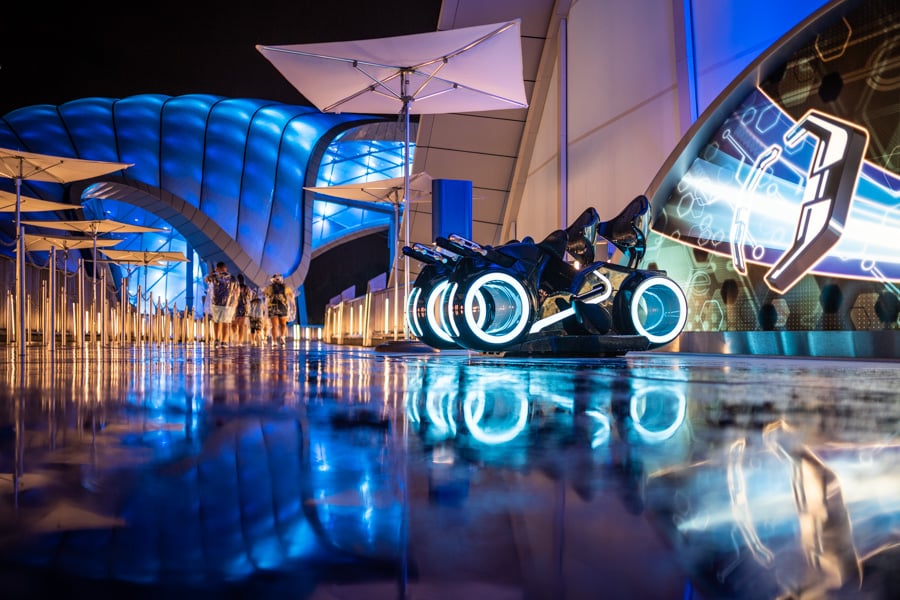

Ultimately, it’s safe to assume that demand has increased for Lightning Lane Single Pass for all of the above reasons. Given what we’ve seen since launch with both sides of the new-look paid FastPass service, it’s also safe to assume that supply is being throttled. It’s impossible to say how much of the dynamic we’re seeing now with reduced LLSP availability is due to demand versus supply.
I’m not willing to make any assumptions about how this will change going forward because of the third factor in the equation: crowds. Again, it’s not busy at all right now and won’t be for the next month-plus. So if we’re already seeing scarcity in a low crowd environment (including a tropical storm scare that has dumped tons of rain on Walt Disney World, further reducing crowds/demand), who knows what we’ll see once October through December roll around and attendance invariably increases.
Even assuming that some degree of throttling is taking place, I’d be inclined to bet that this gets worse–not better–in the final three months of the year and early 2025. That’s also a safe bet because it’s the dynamic that could be observed with Individual Lightning Lanes. Those went from having all-day availability from August through September to sometimes selling out before park opening during the ‘on-site advantage’ window during peak season.
About the only thing I can add is not to fall prey to the WDW FOMO Machine. You don’t need to buy Lightning Lanes, especially not the Single Passes. Every single ride on that list–even the ones with virtual queues (which are staying open for hours in the afternoon when the parks are slower)–is “beatable” without line-skipping. Both Avatar Flight of Passage and Star Wars: Rise of the Resistance are easy during Early Entry or at the end of the night. Seven Dwarfs Mine Train is miserable for Early Entry (IMO), but is also easy at the end of the night. Lightning Lane Single Pass can be nice to have–especially if you’d rather arrive late or leave early–but they’re not strictly necessary for most guests. As someone who is skeptical of spending on upcharges, I’d much sooner purchase Lightning Lane Multi Pass in most scenarios, for whatever that’s worth!
If you have questions about the basics of using–or not using–the paid FastPass service, see our Guide to Lightning Lane Multi-Pass at Walt Disney World for all of the foundational need-to-know info. This whole system is confusing and convoluted, so you might have a question or two-dozen. That answers all of the most common ones we’ve been receiving from readers.
Planning a Walt Disney World trip? Learn about hotels on our Walt Disney World Hotels Reviews page. For where to eat, read our Walt Disney World Restaurant Reviews. To save money on tickets or determine which type to buy, read our Tips for Saving Money on Walt Disney World Tickets post. Our What to Pack for Disney Trips post takes a unique look at clever items to take. For what to do and when to do it, our Walt Disney World Ride Guides will help. For comprehensive advice, the best place to start is our Walt Disney World Trip Planning Guide for everything you need to know!
YOUR THOUGHTS
If you’ve been booking Lightning Lane Single Pass for your upcoming Walt Disney World vacation, what’s been your experience thus far with availability? Have you noticed any discernible differences versus Individual Lightning Lanes? Any success or failures making multiple high-priority Lightning Lane selections? Would you recommend LLSP to others, or just advise sticking to standby/virtual queues? Other problems or thoughts to share? Do you agree or disagree with my assessment? Any questions we can help you answer? Hearing your feedback–even when you disagree with us–is both interesting to us and helpful to other readers, so please share your thoughts below in the comments!

